The hidden world of beetles and their tiny passengers
The hidden world of beetles and their tiny passengers
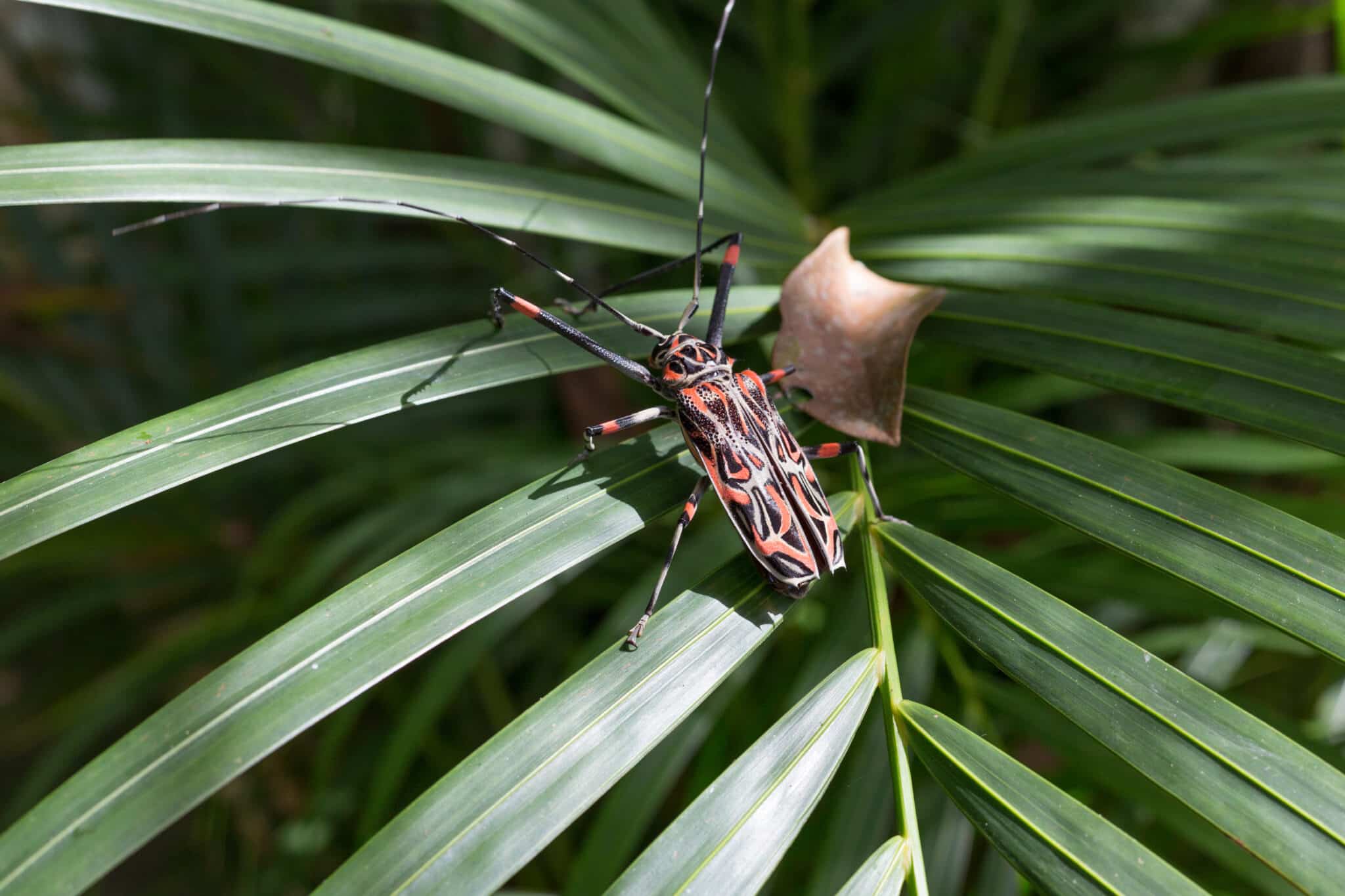
A large ground beetle carrying a dead cicada: an intriguing image a nature photographer stumbled upon while reviewing thousands of photos from a trip to Mozambique. The photo, taken casually one night near a tent in Gorongosa, initially seemed unremarkable. However, upon closer inspection, the photographer noticed something extraordinary: several ants swarming around the beetle’s legs, and a dead driver ant permanently attached to one of its tarsi. The beetle had clearly survived an attack from these aggressive insects, yet this fascinating detail had gone unnoticed in the field.
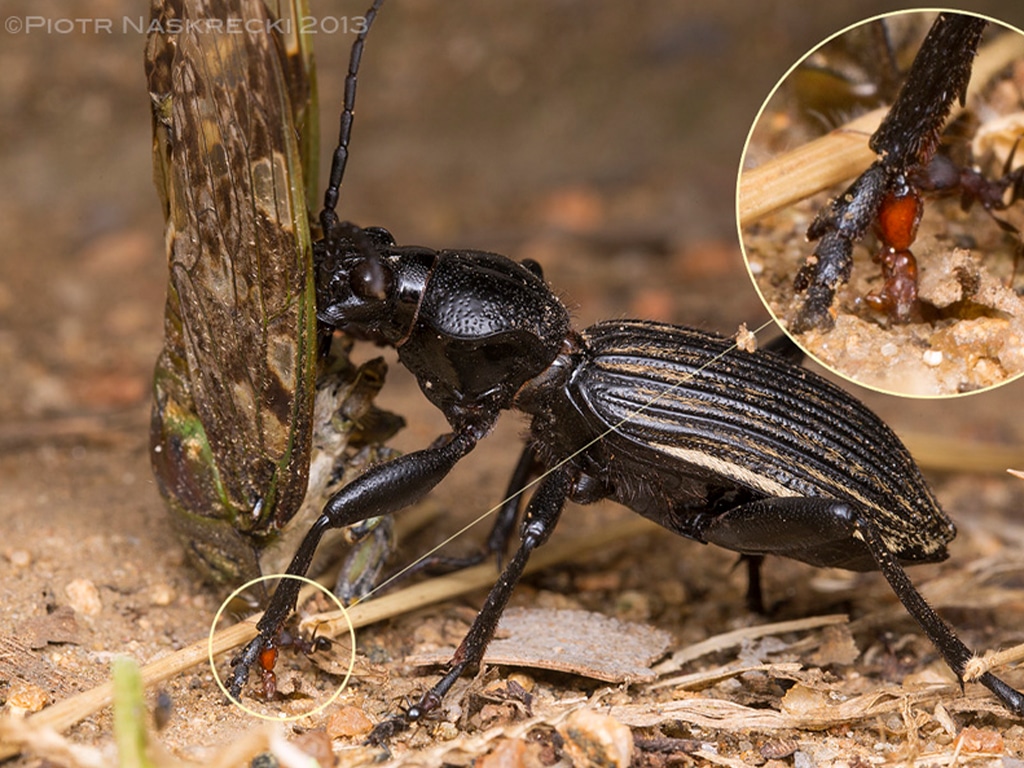
Ground beetle (Anthia fornasinii) carrying a dead cicada. In South Africa these beetles are known under the charming name “oogpister” (“eye pisser”) on the account of their ability to squirt defensive chemicals from their abdomen straight into the eyes of potential predators.
This moment of oversight was not an isolated incident. Years earlier, while photographing a vibrant Harlequin beetle (Acrocinus longimanus) in Guyana, the photographer nearly missed another remarkable interaction. Just as they were about to leave, a tiny pseudoscorpion (Cordylochernes scorpioides) darted across the beetle’s body. Thanks to prior knowledge of this species’ unique relationship with the beetle, the photographer was able to document this rare sight.
A Beetle’s Back: A Thriving Micro-Ecosystem
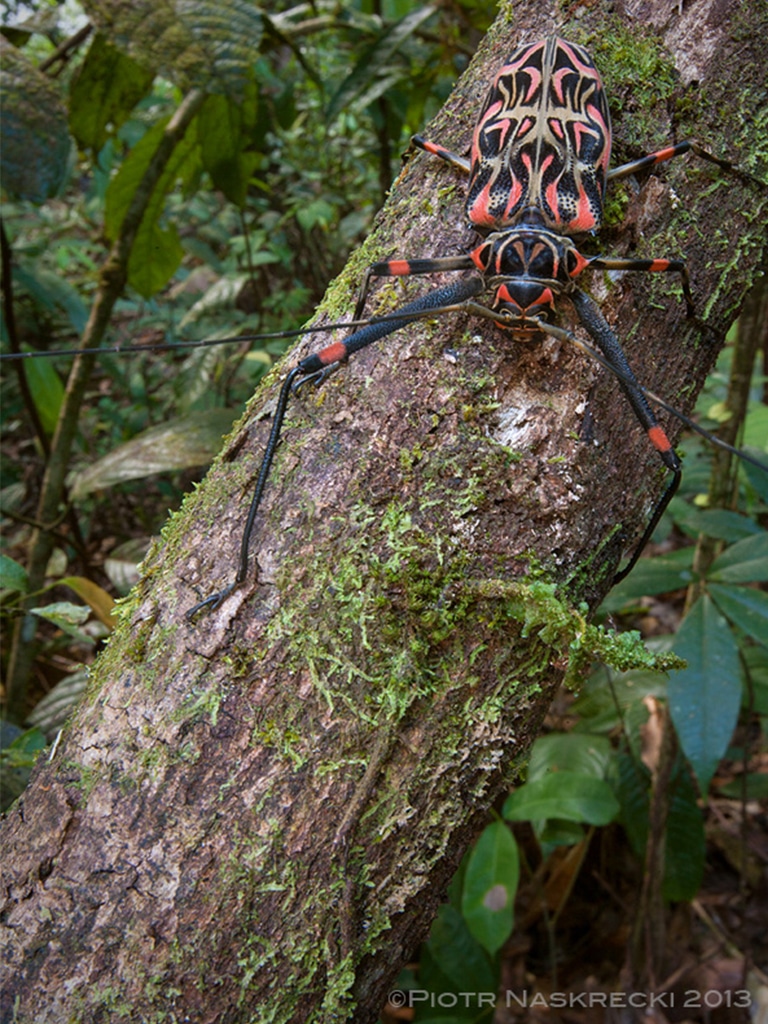
A female Harlequin beetle (Acrocinus longimanus) from Guyana. The body of this insect is a vibrant ecosystem for several species of arachnids.
Harlequin beetles are more than just visually striking insects—they serve as mobile habitats for smaller creatures. These beetles depend on large fig trees in South American rainforests, where they lay their eggs and complete their life cycle. As they travel between trees, they inadvertently transport hitchhikers, including hundreds of mites that hide beneath their wings and in body crevices. These mites, in turn, become a food source for pseudoscorpions.
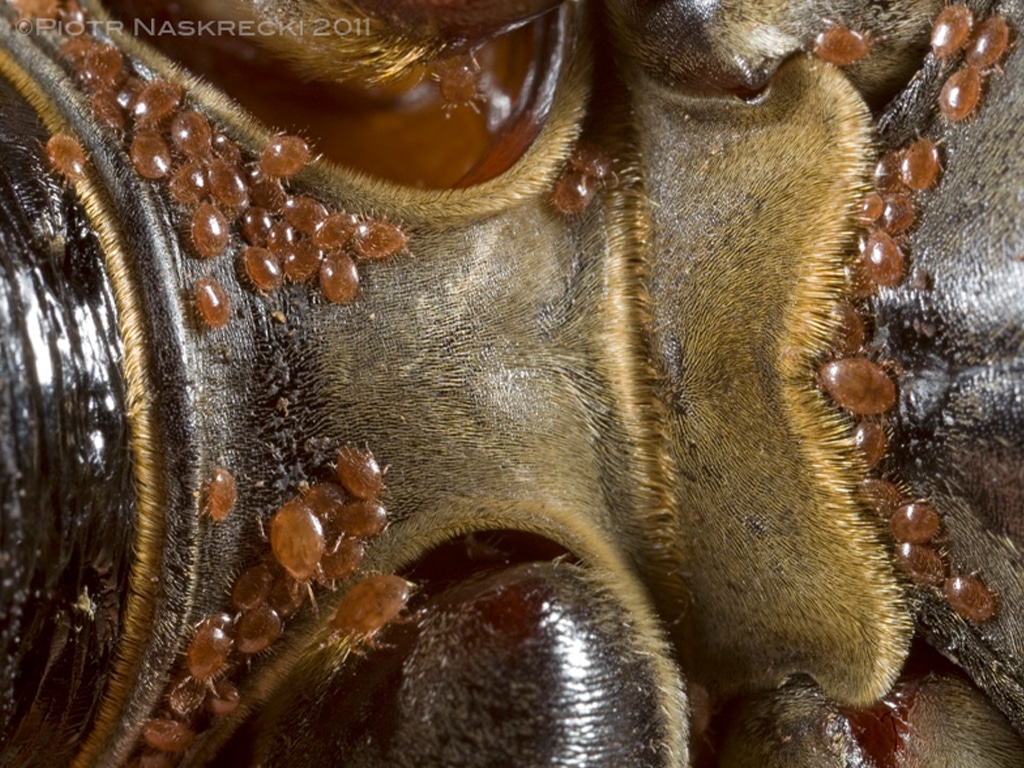
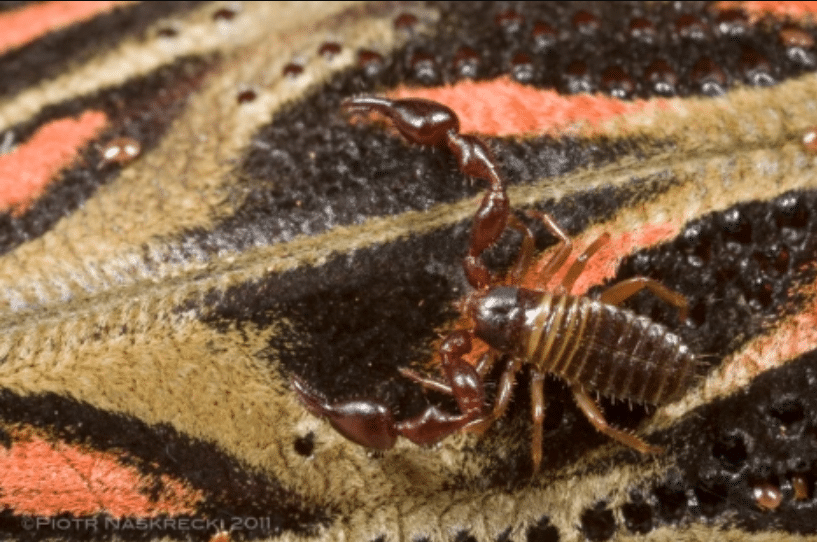
A phoretic pseudoscorpion (Cordylochernes scorpioides) uses the body of the Harlequin beetle to move from one fig tree to another, and to find mating partners and food.
Missed Discoveries and the Value of Prepared Observation
Not every encounter has been as fortuitous. While reviewing an older photograph of an African assassin bug from Guinea, the photographer belatedly noticed tiny mites and pseudoscorpions clinging to its body. Had they been aware of these creatures’ habits at the time, they might have captured more detailed behavior.
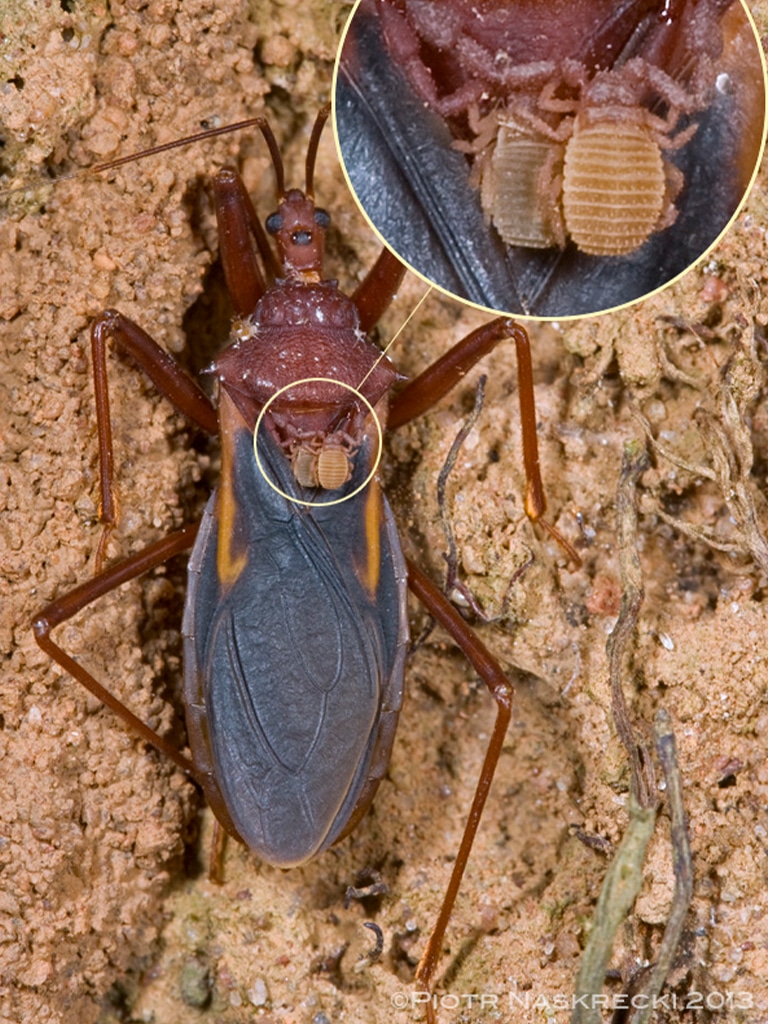
an African assassin bug from Guinea also has phoretic mites and pseudoscorpions, but I only noticed them while processing this photo. It is possible that their natural history parallels that of the Neotropical Harlequin beetle and its passengers.
As Louis Pasteur famously said, “In the field of observation, chance favors the prepared mind.” This principle holds especially true in nature photography. The more a photographer understands their subjects, the more likely they are to recognize hidden interactions—whether it’s a beetle resisting ant attacks or pseudoscorpions riding beetles to new homes. These small but intricate relationships remind us that even the most ordinary-looking scenes can hold extraordinary stories—if only we take the time to look closely.